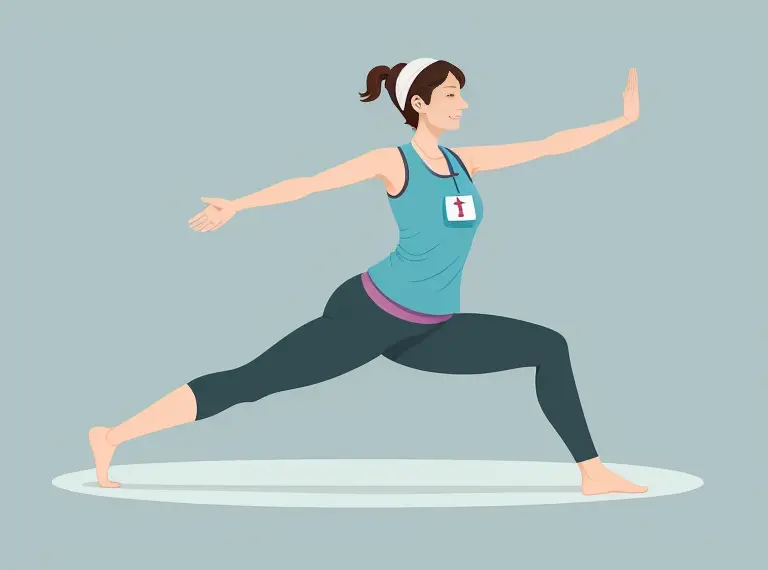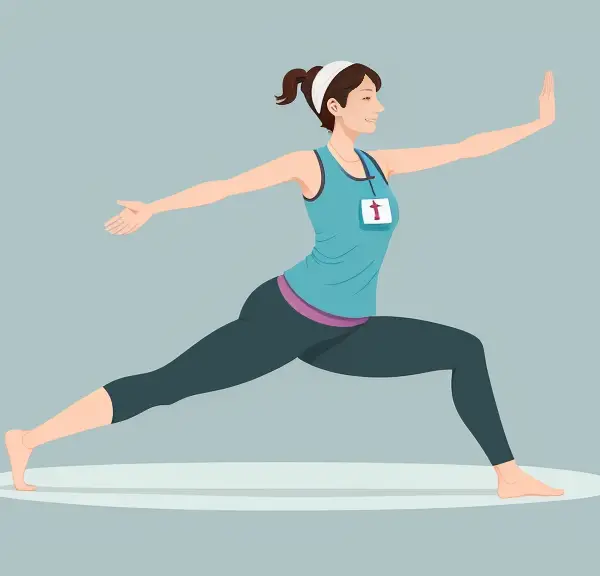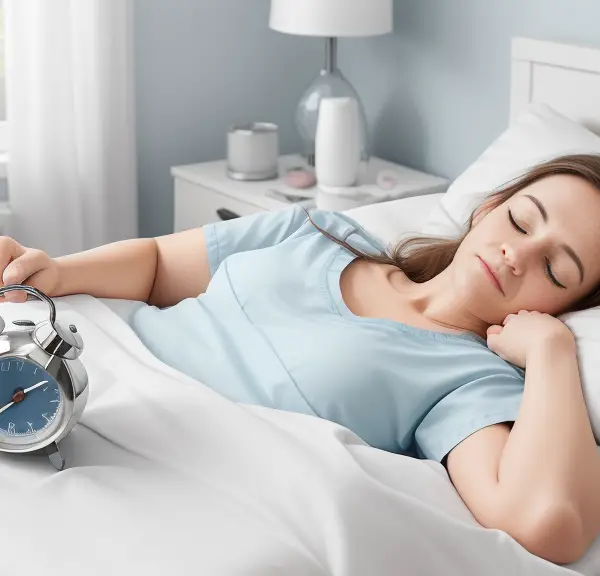Hey there, night owl nurses and tireless caregivers! Ever found yourself caught in the relentless grip of exhaustion during those graveyard shifts?
It’s not just you; it’s a common challenge known as Shift Work Sleep Disorder (SWSD).
The battle against sleep disruption is real, but fear not – we’re here to arm you with a sleep-defying arsenal. Get ready to power up your snooze game and improve patient care, all while keeping those tired eyes open!
Understanding Shift Work Sleep Disorder
So, what’s the fuss about SWSD?
Imagine your internal body clock as a symphony conductor, orchestrating your energy levels and sleepiness throughout the day. Now, imagine working night shifts as a nurse – it’s like asking that conductor to lead a jazz band and a classical orchestra simultaneously. That’s SWSD – the rhythm gets all wonky, and your body’s internal harmony is disrupted.
You see, our bodies are wired to follow a natural circadian rhythm, a 24-hour cycle that influences when we feel alert and when we crave sleep. But nurses working the night shift are like warriors battling the darkness, and it’s not just a war against fatigue; it’s a war against their very nature.
Addressing SWSD
Alright, let’s cut to the chase: patient care. It’s your top priority, right? Well, imagine trying to provide top-notch care when you’re feeling as lively as a deflated balloon. Unaddressed SWSD doesn’t just leave you tired; it’s like throwing a bunch of banana peels on the hospital floor – it’s a recipe for accidents waiting to happen.
Nurses are the unsung heroes of healthcare, and your alertness and focus directly impact patient outcomes. Think of it this way: would you want a pilot to fly a plane after pulling an all-nighter? Exactly. Your patients deserve the same level of attention and care.
Now, here’s the kicker: untreated SWSD isn’t just about yawning through a shift. It’s about increased risk of errors, mood swings that could rival a rollercoaster, and a general sense of unwellness. You wouldn’t run a marathon with one shoelace untied, right? So, let’s tie up those sleep laces and get you ready to conquer each shift like the superhero nurse you are!
1. Creating a Sleep-Conducive Environment
Let’s start by setting the stage – or in this case, the sleep environment. Picture this: your bedroom becomes a sanctuary of serenity, an oasis of darkness, and a cocoon of comfort. How do you achieve this sleep haven, you ask? Here are some gems to tuck into your sleep treasure chest:
- Dim the Lights: Darkness cues your body that it’s time to catch some Z’s. Invest in blackout curtains or wear an eye mask to mimic the nighttime.
- Whispering Walls: Noise can be the enemy of a peaceful sleep. Drown out the chaos with a white noise machine or soothing sounds like raindrops or waves.
- Hug that Mattress: Your bed should be as inviting as a warm hug. Choose a mattress and pillows that cradle you like a cloud.
2. Establishing a Consistent Sleep Schedule
Just like how your favorite TV show airs at the same time every week, your body craves a predictable sleep schedule. It’s like giving your internal conductor a reliable sheet of music to follow. Here’s the lowdown:
Ever notice how your body adjusts to your regular waking time, even on your days off? That’s because your circadian rhythm loves consistency. So, whether you’re on night shifts or transitioning back to the day world, stick to a set sleep schedule as much as possible. Your body will thank you by giving you the gift of more restful sleep.
Now, we get it – maintaining a consistent sleep schedule can feel like trying to catch a butterfly in a hurricane. But fret not! If you have rotating shifts, aim to gradually adjust your sleep time over a few days. It’s like teaching your body a new dance routine – one step at a time.
And hey, speaking of routines, let’s chat about rituals. Just like how a warm cup of tea can soothe your soul, creating a pre-sleep routine signals your body that it’s time to wind down. Think calming activities like reading a book, taking a warm bath, or practicing some gentle stretches. Your body will soon associate these rituals with bedtime, making it easier to slip into slumber mode.
3. Nutrition and Hydration Strategies
Alright, let’s tackle the fuel that powers your night shifts – your diet. Picture your body as a high-performance race car; it needs the right kind of fuel to zip around the track with finesse. When it comes to keeping your energy levels steady and your alertness sharp, your plate plays a vital role:
- Balanced Bites: Aim for a balanced diet rich in whole grains, lean proteins, fruits, and veggies. These foods release energy slowly, preventing those energy crashes.
- Snack Smart: Snacking can be your secret weapon against nighttime hunger. Opt for protein-rich snacks like Greek yogurt or a handful of nuts.
- Hydration Station: Just like a car needs fuel, your body needs water. Staying hydrated helps maintain your focus and keeps fatigue at bay.
But wait, here’s the kicker: while a hearty meal fuels you up, a heavy one before bed can leave you feeling like a sloth in quicksand. Eating a large meal right before sleep can lead to discomfort and indigestion, making it harder to drift off. So, try to finish your last meal a few hours before hitting the hay.
And what about the elixir of the night shift – coffee? Ah, the aroma of that heavenly brew can feel like a comforting hug when the night is dark and quiet. But remember, coffee is like a trusty steed – it can carry you through the night, but if you overdo it, you might end up galloping right into the sunrise.
4. Physical Activity and Stress Reduction
Let’s pump up the adrenaline and talk about physical activity. Now, we’re not suggesting you run a marathon during your break, but getting your body moving can work wonders for your energy levels and sleep quality. It’s like giving your circadian rhythm a friendly nudge:
Think about it – exercise releases endorphins, those magical mood-lifters that make you feel like you’re dancing on air. And it’s not just about mood – regular physical activity can help you fall asleep faster and enjoy deeper sleep. So, whether it’s a brisk walk, a quick yoga session, or even a spontaneous dance party in the break room, let movement be your nighttime ally.
Speaking of allies, let’s chat about stress. Working as a nurse is a noble yet demanding gig, and stress can creep up like an unexpected rainstorm. Stress not only takes a toll on your emotional well-being but can also play havoc with your sleep. So, let’s arm you with a stress-busting toolkit:
- Deep Breaths: When stress knocks on your door, take a moment to inhale calmness and exhale tension. Deep breathing can be your instant chill pill.
- Mindful Moments: Practice mindfulness during your shift – focus on the present moment and let worries take a backseat.
- Stretch and Relax: Incorporate mini stretches and relaxation exercises during your breaks. It’s like giving your mind a spa treatment.
5. Effective Caffeine Management
Alright, we know caffeine is your trusty sidekick during the night shifts. It’s like that beacon of light guiding you through the darkness. But just like too much light can disrupt your sleep, too much caffeine can hijack your rest. Let’s find that caffeine sweet spot:
Here’s the deal – caffeine can be a lifesaver when you need to stay awake, but its effects can linger for hours. So, if you’re sipping on a coffee mid-shift, be mindful of its half-life – the time it takes for half the caffeine to leave your system. Avoid caffeinated beverages several hours before bedtime to ensure your sleep isn’t compromised.
But wait, what if you’re in dire need of a pick-me-up during the wee hours? Swap your cup of joe for a soothing herbal tea. It’s like trading in your race car for a smooth cruise on a moonlit night. Chamomile, peppermint, and valerian root teas can provide comfort without the jolt.
And hey, speaking of nighttime rituals, consider creating a caffeine cutoff time. Just like Cinderella’s clock striking midnight, let your caffeine cutoff be a reminder that it’s time to wind down and prep for some quality shut-eye.
6. Napping for Recovery
Let’s talk about a secret weapon that can make all the difference during your battle against fatigue – the power nap. Picture this: you’re in the middle of your shift, and your energy levels start plummeting faster than a roller coaster. Instead of reaching for another cup of coffee, consider a quick power nap to recharge your batteries:
Now, we’re not talking about a three-hour siesta that leaves you more groggy than a bear waking up from hibernation. We’re talking about short, strategic naps that give your brain a chance to reset without diving into deep sleep. Think 20-30 minutes – enough to rejuvenate without making you feel like you’ve time-traveled to another dimension.
In fact, NASA’s astronauts swear by power naps for improved alertness and performance, so why shouldn’t nurses take a page from their book? Just make sure to time your nap wisely – ideally, during your break or right before your shift. It’s like fitting in a quick pit stop to refuel your energy tank.
7. Utilizing Technology and Tools
Let’s explore how modern gadgets and tools can come to your rescue. Imagine having a personal sleep coach that tracks your sleep patterns and guides you toward better rest. Enter sleep tracking apps and wearable devices – your nocturnal allies:
Imagine slipping on a wristband that monitors your sleep stages and wakes you up during your lightest sleep phase. It’s like having an alarm clock that whispers, “Rise and shine, well-rested warrior!” These devices can provide insights into your sleep quality, helping you make informed changes to your sleep habits.
And hey, don’t underestimate the power of your environment. When you’re trying to sleep during the day, it’s like being in a movie theater with the lights on. But you can create your own nighttime by using blackout curtains, sound machines, and even a comfy sleep mask. Transform your surroundings into a sleep-friendly haven that supports your nighttime journey.
8. Mental and Emotional Well-being
Alright, let’s get real for a moment, night-shift heroes. Your mental and emotional well-being matters just as much as your physical health. Working odd hours can sometimes feel like navigating uncharted territory, but you’re not alone on this journey. Here are a few strategies to keep your spirits high:
- Mindfulness Magic: Practicing mindfulness is like taking a vacation for your mind. Set aside a few minutes each day to simply be present and cultivate inner calm.
- Talk it Out: Remember, it’s okay to share your feelings with a trusted colleague or supervisor. Sometimes, airing your thoughts can lighten the emotional load.
- Counseling Resources: If the night-shift blues persist, consider seeking professional support. Talking to a therapist can provide valuable coping strategies.
9. Collaboration and Support
Collaboration and support, It’s like being part of a tight-knit crew on a challenging mission. Your fellow nurses are your comrades, and together, you can conquer the sleep struggle:
Communication is key, folks. Share your experiences, insights, and strategies with your colleagues. It’s like building a sleep treasure chest filled with gems of wisdom. By openly discussing your challenges and triumphs, you create a sense of camaraderie that makes the night shifts feel less isolating.
And don’t forget about your supervisors and management. They’re like the captains steering the ship, and they want their crew – that’s you – to perform at their best. Discuss the impact of SWSD on your well-being and patient care, and explore potential solutions as a team.
Conclusion
You’ve made it to the finish line, night-shift warriors! Armed with these 9 strategies, you’re well on your way to conquering SWSD and improving your well-being as a nurse. Remember, just like a symphony, your body and mind need harmony to create a masterpiece of patient care.
So, let’s toast to better sleep, enhanced patient care, and a healthier, more resilient you! Keep these strategies close, and let them be your guiding stars as you navigate the night shifts with grace and confidence.














